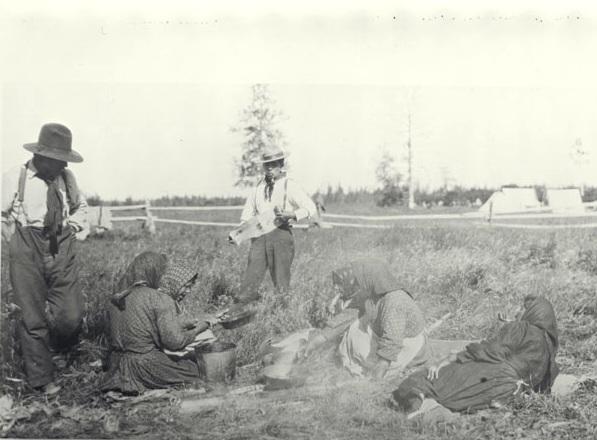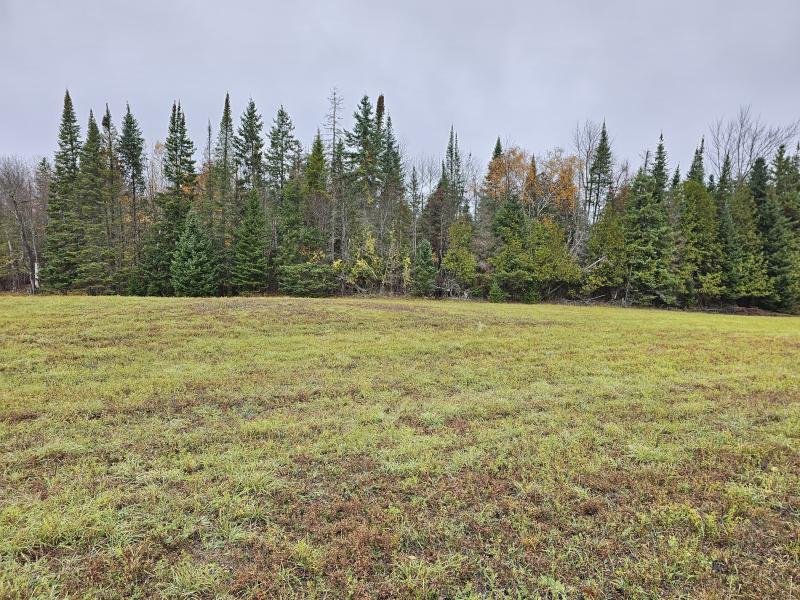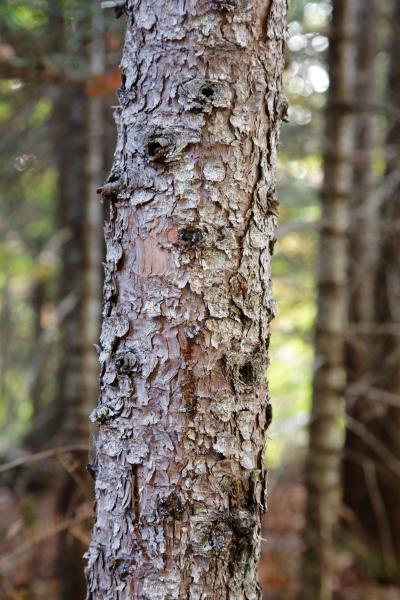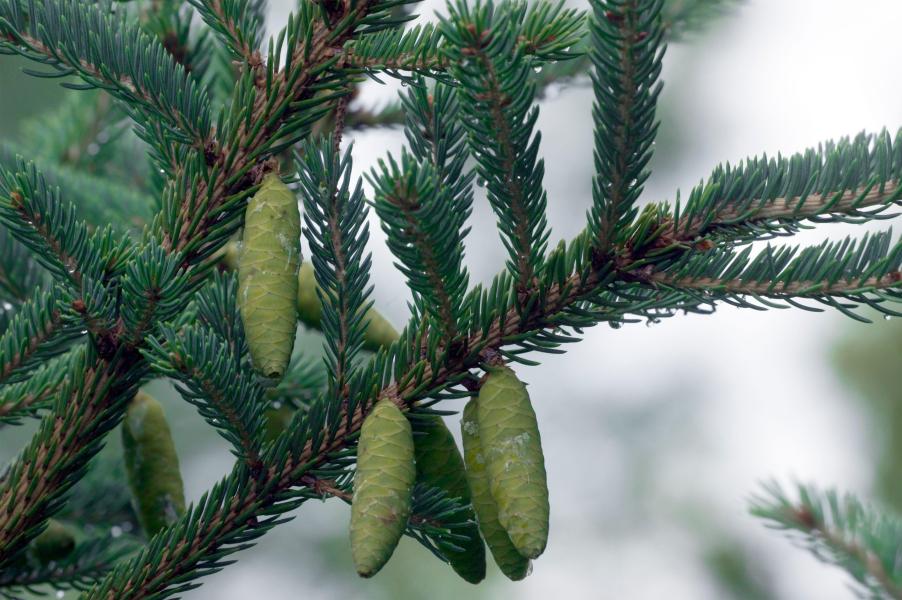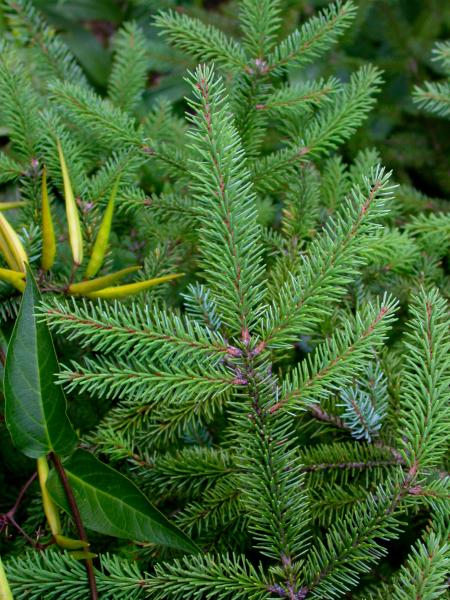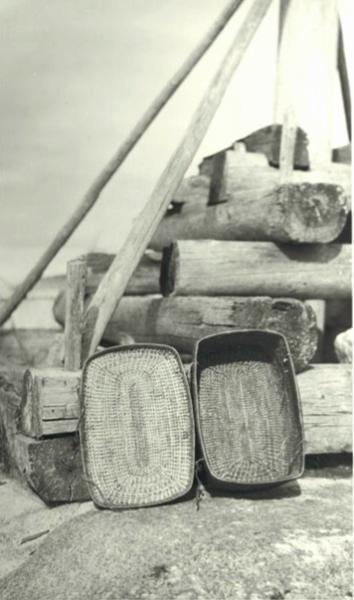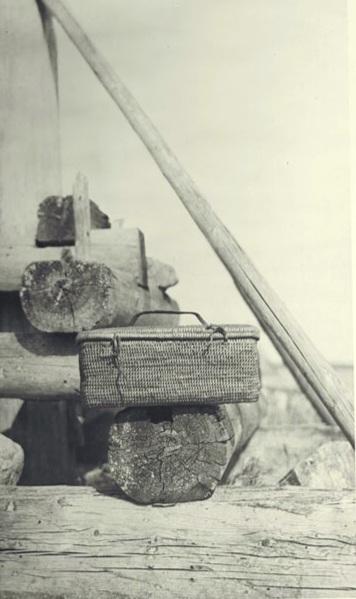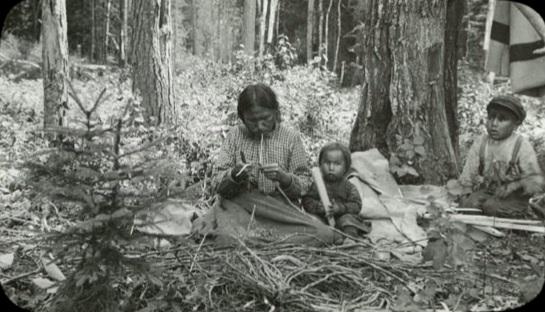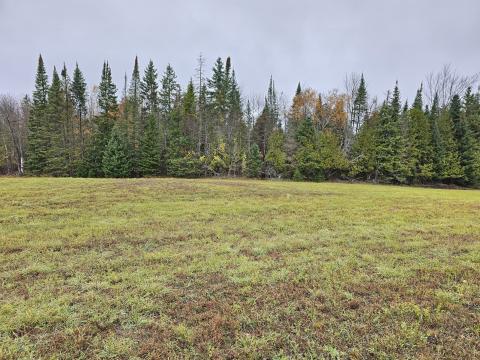
Names and Their Meanings
Black Spruce - Picea mariana
Red Spruce - Picea rubens
White Spruce - Picea glauca
Black Spruce
Description
Black spruce is a native tree to North America with a northern distribution. It is the iconic tree of the boreal forest, thriving on the acidic and poorly drained bogs, swampy peatlands, and muskeg soils there, and the shallow soils of the Canadian shield. A relationship with fire is built into the morphology of black spruce, as its branches are distributed from base to crown, with cones clustered only at the crown of the tree. Fires open black spruce cones, distribute seeds by wind; seeds in turn favor mineral and organic seedbeds where the moss and lichen have burned off. Its branches descend, with each of the ends turned up, and lower branches sweeping the ground. Needles of black spruce are dark blue-gray green, short, have blunt ends, and grow densely all the way around yellowish hairy twigs. Cones are purple until turning brown when mature.
Conservation Status
S5 (Secure) throughout growth range
Red Spruce
Description
A tree growing up to 131 feet tall, with a trunk up to about 3 feet in diameter. The crown is narrowly conic and the bark is grey-reddish to brown. The evergreen needles emerge singly from twigs, are four sided, and curve inward. Needles are reddish when young, maturing into yellow to green. Red spruce likes acidic shallow soils developed from glacial sediments, occurring in mixed forests in mountainous areas, steep rocky slopes and wet bottomlands. Red spruce is sensitive to pollution, and is declining over its range, which is already fairly small, limited to the Northeastern seaboard maritime provinces, Maine, Vermont, New Hampshire, Southern Québec, and pockets of Ontario, New York, and other states, in elevated areas. These trees are shade tolerant but require full sun to grow, forming the canopy dominant or codominant in climax, spruce-fir forests. Red spruce can live over 300 years.
Conservation Status
S3 (Vulnerable) in Ontario, S5 (Secure) in New York, and S4 (Apparently Secure) in Québec.
White Spruce
Description
A tree growing up to 150 feet tall. The crown is conic and retains a full pyramid shape at maturity. The bark is gray-brown and scaly. The evergreen needles are borne singly on a pinkish twig. The needles are 4 angled and blue-green in color, longer than Black spruce, and sharp at the ends. The needles of white spruce have a strong smell when crushed, earning it the nickname “cat pee spruce,” in contrast with black and red spruces. White spruce likes well drained mineral soil, occurring in interior forests, river banks, montane slopes, tree-line sites, as well as in muskegs and bogs. These trees are early colonizers after disturbances and grow and reproduce quickest in full sun. White spruce is also a canopy dominant in mid to late successional forests, and can live up to 1000 years.
Conservation Status
S5 (Secure) in Ontario
Uses
Spruces are ubiquitous allies for craft, utility, medicine and even food purposes. Ojibway ethnobotanist Scott Herron described their utility for making cordage and applications of the resin for sealing vessels and canoes. Indeed, Frederick Wilkerson Waugh documented the use of spruce gum as a sealant or canoe gum for smoothing over seams and stopping holes. Spruce wood was and is used for making paddles and oars. Spruce roots were and are used among Anishinaabe as materials for basketry, lacing for canoes and other cordage purposes. Red spruce wood is used for the bodies of violins and acoustic guitars. Red spruce wood is used in construction and for crates.
Spruce gum is a medicine, chewed for nutritional and immune properties, respiratory infections, and cancer. Spruce gum made the news in Canada as recently as 2015, when Catherine Boucher of Northwest Territories explained that her consistent, daily ingestion of spruce gum, every twelve hours, shrank her cervical cancer until it was completely gone.
Alyssa General of Six Nations of the Grand River agrees that spruce saps and gums are great disinfectants and have strong antibacterial properties. She recalled when her dad stuck a severed finger tip back on with spruce gum, which acted as both a styptic and a glue.
Spruce tips are a popular medicinal food item, collected in the spring for teas when the new growth produces light green shoots at the tips of branches. There is a revitalization in the popularity of harvesting spruce tips to make teas, beers, sodas & syrups, ice cream, puddings, deserts, and as a spring vegetable. Spruce beer is a beverage that has been popular as both a soda and an alcoholic beverage for over a century. Spruce trees are food and nesting sites for birds and mammals. Black spruce is one of the main species in the paper and pulp industry, planted and harvested across the north as pulpwood.
Frederick Wilkerson Waugh took evocative photographs documenting the uses of spruce in Long Lake in 1916, and Lac Seul in 1919. All photos below are credited to Frederick Wilkerson Waugh, courtesy of the Canada Museum of History Collections.

